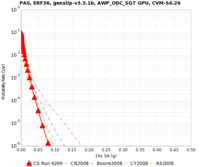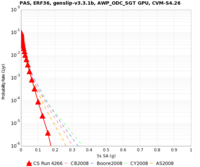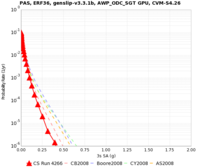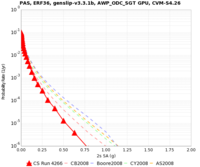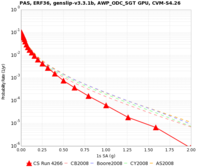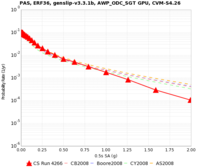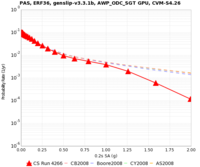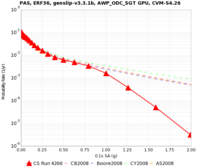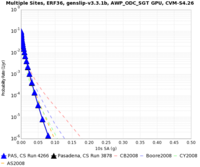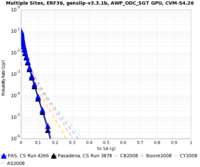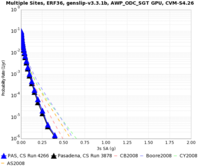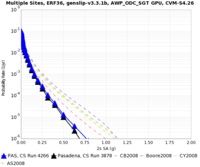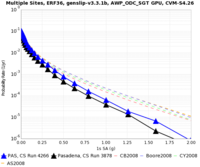CyberShake Study 15.12
From SCECpedia
Revision as of 22:33, 1 October 2015 by Scottcal (talk | contribs) (Created page with 'CyberShake Study 15.10 takes the deterministic results from CyberShake Study 15.4 and adds broadband components. == Initial tests == We performed initial tests by using th…')
CyberShake Study 15.10 takes the deterministic results from CyberShake Study 15.4 and adds broadband components.
Initial tests
We performed initial tests by using the Graves code from the current version of the BBP to synthesize stochastic seismograms, along with applying site amplification from CB2014. We used the Vs30 value taken from the same velocity model as the deterministic seismograms (CVM-S 4.26). We also applied site amplification from CB2014 to the deterministic seismograms. Then the deterministic seismograms were low-pass filtered at 1.0 Hz, and the stochastic seismograms were high-pass filtered at 1.0 Hz, and the results were combined. From this broadband seismogram we calculated PSA and RotD values.
| Run | 10 sec SA | 5 sec SA | 3 sec SA | 2 sec SA | 1 sec SA | 0.5 sec SA | 0.2 sec SA | 0.1 sec SA |
|---|---|---|---|---|---|---|---|---|
| PAS, stochastic only (run 4266) | ||||||||
| PAS, stochastic vs deterministic (run 4266 vs run 3878) |
